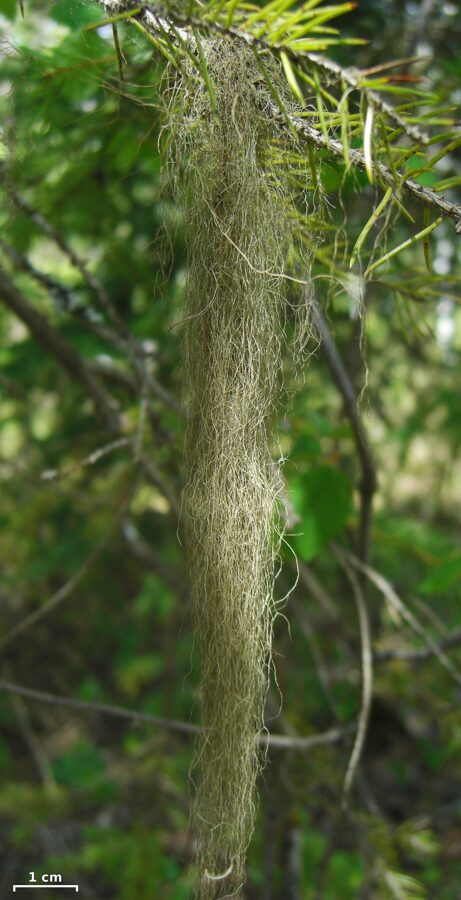
Horsehair lichen is gray, the branches are fine, all the same thickness. Similar to usneas, only this lichen does not have elongated central branches.
The following text is based on scientific research, therefore, everything is still being researched and not unequivocally proven.
The main active substance, which is extracted from fine-haired bryoria, is barbalic acid. On the other hand, barbatolic acid is promising for the treatment of breast cancer, the acid has a cytostatic effect. The acid inhibits the development and reproduction of various malignant cells. In perspective, the substances in this lichen could become part of anticancer drugs.
Horsehair lichen extracts have been laboratory tested against various bacteria as an antibacterial agent. The preparations are effective against gram-positive and gram-negative bacteria, including M. Tuberculosis. Also tested on yeast, where the extract also shows good activity.
Accordingly, anti-bacteriological, anti-fungal and cytostatic effects can be attributed to Horsehair lichen . I will not be able to recommend specific recipes for use, because its use is not forbidden in folk medicine. However, something makes me think that in the past people used it as equivalent to usneja - not knowing that the species differ.
What can we conclude? Careful use of this lichen is required, ideally externally. Do not give it to young children and pregnant women, and do not overdo it with doses. However, if you make a mistake and collect this lichen when collecting the usney, which is quite possible. Then you will not pose a threat to your health.
There are no data on the toxicity or side effects of the plant.
Recognition: take one strand of lichen and try to stretch it. If it breaks easily, it is Horsehair lichen , if it stretches and resists, then it is usnea.